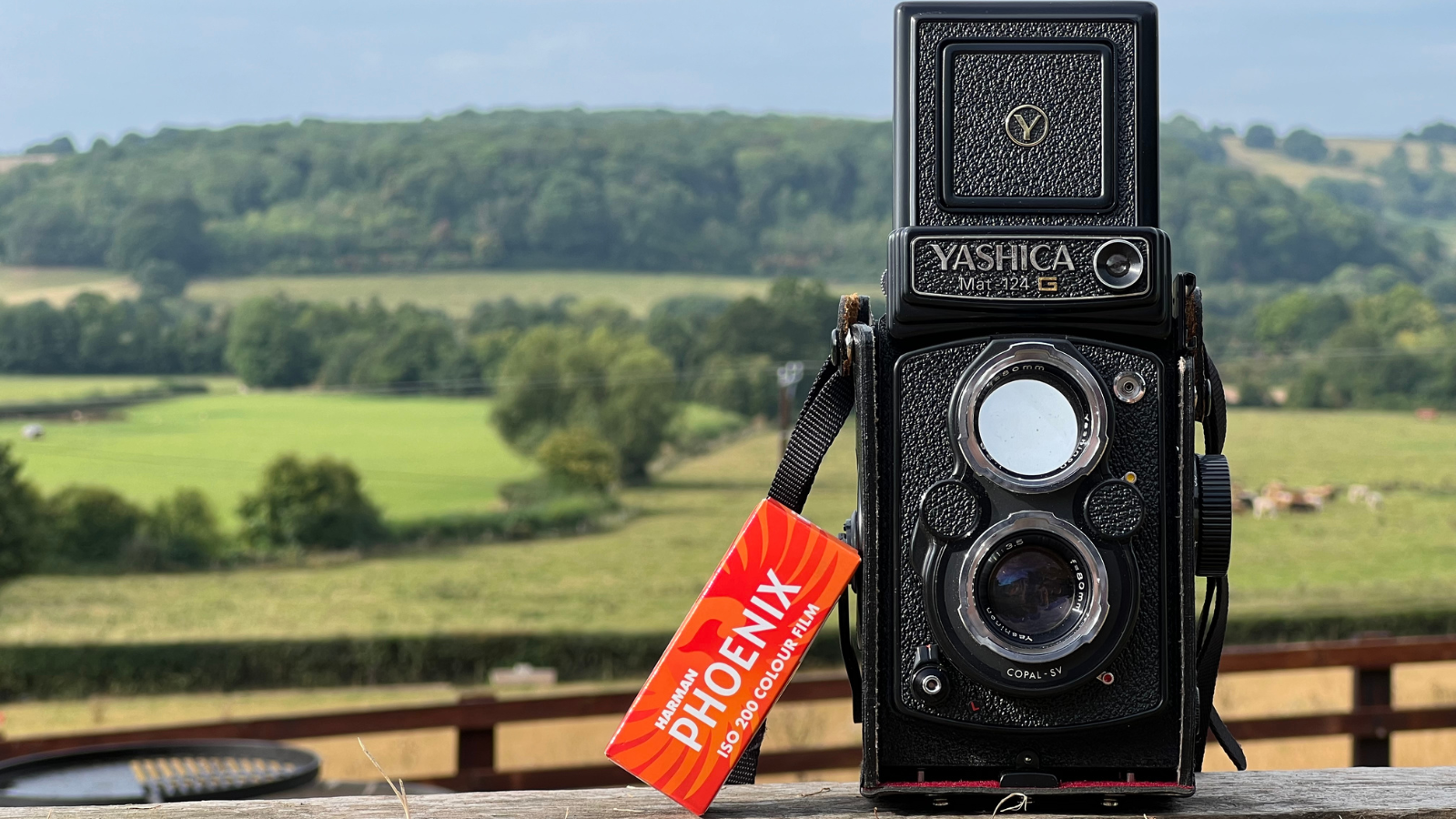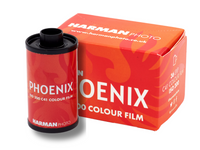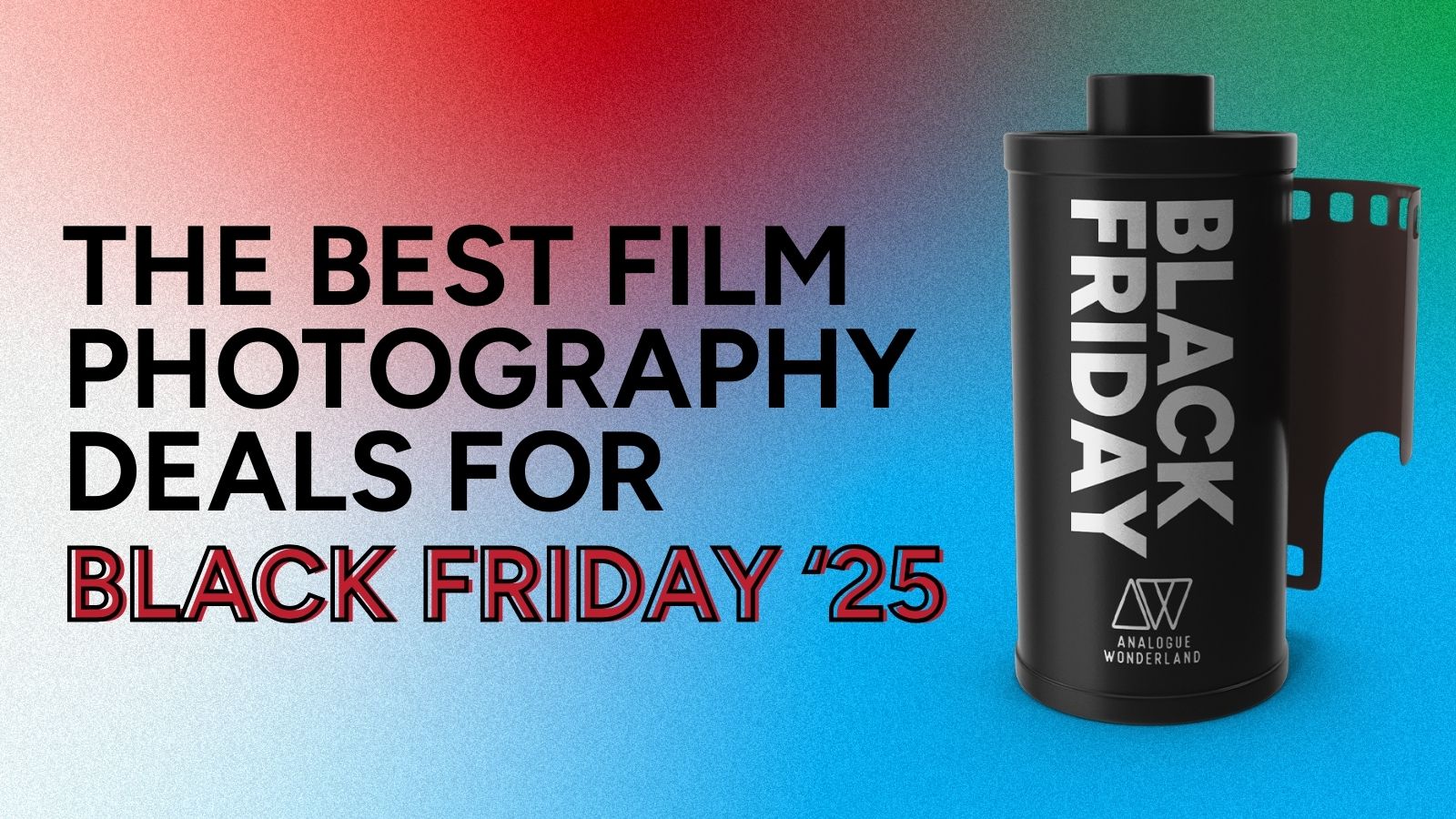Black Friday 2025 has landed at Analogue Wonderland, bringing some of our biggest film photography deals of the year - from discounted film and cameras to money-saving WonderLab processing offers, exclusive bundles, and festive specials available for a limited time only. Grab a great deal while stocks last!
Recent posts
Shop the article

Harman Phoenix 120 Film Review: First Look
By Paul McKay
Hurrah! Harman Phoenix 120 film is now available for medium format shooters who were gutted to miss out on experiencing Harman's debut colour film last year. As a quick recap: Phoenix is the first colour emulsion to ever be fully crafted (research, development, manufacture and finishing) in the UK. Harman are the same company who run the Ilford and Kentmere brands, so they are experts in medium format! Let’s see how their latest emulsion stacks up in 120 size, with early sample shots taken and developed by the Analogue Wonderland team 💪🏼
What to expect
It’s worth remembering that Phoenix is very much the start of Harman’s colour journey. From the first test rolls and conversations with their team they have been keen to stress that it’s a learning process. They are working out the technical challenges and solutions as they go - and frankly it’s an incredible achievement to have got this far so fast.
You can learn more about the backstory from the video we filmed with their launch team in autumn 2023:
I have been shooting Phoenix in 35mm format since pre-launch testing last summer, so we already have a good idea of how Phoenix 35mm looks in different situations. In fact we did a detailed comparison of Phoenix versus Kodak Gold versus Lomography film with side-by-side images. From that you can see that in general Phoenix film has:
- high contrast
- strong greens
- sizeable grain
- strong halation
- middling resolution
versus established colour film brands.
This is consistent with Harman’s tech sheets: they know that their emulsion layers are not going to give ‘true’ results - but this doesn’t mean that it won’t create incredible images!
The community has rated Harman Phoenix 35mm film 4.46/5 at the time of writing - with hundreds of sample photos showing the different results that are possible. I think @analog_jono puts it well: “Great unique colour emulsion… Not the most versatile film but if you like the look then you can get some really warm high contrast and grainy photos with a very 1970s vibe. I love the blues and reds/oranges that come out, but greens come out a bit muddy especially in darker scenes.”

Photo (c) @analog_jono
What about medium format?
So far we’ve only been discussing the 35mm film results. Harman Phoenix 120 has the same chemical composition (with the small necessary tweaks to allow it to interact properly with 120 format base and backing papers) so you should expect similar colours and contrast. But medium format creates much bigger negatives, which subtly changes the look of a film.
This is because any film grain - which remains the same physical size in different formats - is smaller relative to the total image. So viewing photos of the same size print or screen will look slightly different.
The larger frames also capture more detail of the scene, which helps resolve finer elements of the photo when viewing similar sizes of prints/scans.
The combination of these elements should help alleviate concerns from the community about Phoenix’s ability to take detailed shots - and the example photos that came in the press pack from Harman definitely seem to back that up!


Phoenix 120 in the real world
I took my first sample roll into Oxford on a sunny day, looking to capture bright colours and the architectural detail of the city centre. I used my YashicaMat 124G with its beautiful Yashinon 80mm lens - kit that I trust to deliver stunning focus and detail, and nail the exposure triangle.
And the results were fantastic! Sure enough the detail and resolution in medium format is really impressive and the unique colour palette from Phoenix 35mm remains strong 💪🏼




The colours look more like golden hour evening than the harsh afternoon sun of reality - gorgeous gentle reddening of the tones
There were a couple of photos that didn’t work as I’d hoped - and this is predominantly down to Phoenix’s strong contrast. The dynamic range of this emulsion is noticeably narrower than most colour negative films (probably more comparable to slide film) so any scene with more than a couple of stops’ difference between dark and light became unintelligible.


I'd exposed to allow for the sky and cloud, but it meant I lost the entire facade of the building in shadow - a more flexible colour negative film would have shown more detail
Testing in different cameras
For my next challenge I took three rolls of Phoenix 120 on holiday, bringing my Holga 120 and ONDU pinhole camera alongside my Yashica 🥰

Pick your poison 😈
The weather was overcast and dark, and my Yashica light meter decided to consistently overcall the light intensity by 5 stops. A battery issue 😭 (note to self: book a camera repair) So think of these images as testing Phoenix with ‘deliberate’ underexposure.




You can see that when the film is underexposed - and kudos to my lab team for recovering so much detail when developing and scanning the 120 film - the colour shift is much stronger. The sky turns green instead of blue, green grass gets a reddish hue, and the entire image has a strong ‘experimental film’ feel.
Rating Phoenix 120 at ISO 100
By the time I realised that my beloved Yashica had been lying to me about the exposure, I had just one last chance to shoot a well-balanced roll of film before launch day! I strapped on a KEKs KM02 lightmeter and decided to test out how good Phoenix 120 looks when rated at ISO 100 instead of 200.
The warehouse team were my (un)lucky test subjects…and I love the images!! The shots were taken in front of our warehouse door (which is bright red in real life) on a cloudy day so the light was even across the entire frame. The low contrast and decent light brought the film to life, and I really like the results.


I then switched the ISO setting to 200, and leaned into the high contrast of the film to try and isolate colours and tones.



I metered carefully for the flower petals in both these last two shots, and the narrow dynamic range of Phoenix allows them to really POP versus the darker background. Other colour negative films would have captured too much of the background light, so wouldn't have got the same lovely separation
Review of Harman Phoenix 120: final thoughts
I like Harman Phoenix 120 the more I shoot it. It is unforgiving of mistakes - by either photographer or equipment - but in the right light and with proper care it has a wonderful unique look. And I also enjoy the way it comes out the developing machines big and purple!

Harman Phoenix 120 at the top - with Kodak Gold 35mm on the bottom for comparison of colour 😅
It requires more planning than the average medium format colour film, but that provides a fantastic opportunity to stretch your creative and artistic muscles.
What are your thoughts on this next step in the Harman colour film journey. Are you inspired to try a roll of Phoenix 120?
Ready to dive in?
Keep Reading
View all
Christmas 2025: Shipping & Opening Hours
Christmas 2025 is fast approaching! To make sure your analogue goodies arrive in time, take note of our last shipping dates, plus opening and operating hours over the festive season. We've got everything you need to gift the magic of film photography this Christmas!

Film Photography Christmas Gift Guide 2025: Analogue Wonderland
Capture the magic of Christmas with film - no filters needed. Our 2025 Film Photography Christmas Gift Guide 2025 is packed with thoughtful presents for every type of shooter, from curious beginners to seasoned photographers. Discover film stocks, cameras, and creative accessories that will make this festive season truly memorable.
Subscribe to our newsletter 💌
Sign up for our newsletter to stay up to date on film photography news, sales and events:
Free Tracked Shipping
On all UK orders over £50
Passion For Film
An unbeatable range and an on-site lab
Our Customers Trust Us
Thousands of independent 5* reviews
All Deliveries are Carbon Neutral
Independently audited and verified by Planet
- Opens in a new window.








5 Comments -
Dalis • -
Floz • -
Nick W • -
Doug • -
Doug •
Finally have shot one in 35 mm. Home scanned on Nikon LS-40 with huge colour arrangements in post. Everything writen out there is true. High contrast, low attitude, colour saturation, grain, some colour shifts. And I really love it! Why do we hell shot analog? Do we need super high resolution? High dynamic range? Perfectly clear and exact colour tones? Unvisible grain? Low price? Go out and buy second-hand Sony A7II for $500 with adapter for any lens and you will get it all. Fortunately there is this amazing Phoenix that makes pictures in a completely diferent way, either you love it or not. Moreover, there are still many colour film brands out there that can make very good captures in terms of colour reproduction or dynamic range so why should be Harman trying to play the same game?
Love these results, and given how much I’ve enjoyed the 35mm version I’m excited to try it on 120!
I’m a sucker for any experimental film, but my faves are ones like this where the results can be either quite ‘out there’ and distinctive or turn out more ‘normal’ (for lack of a better word!) – it may bit of a gamble but that surprise when I see the result is my favourite part of photography.
I also think the purple negatives are really neat, although the first time I was worried I’d screwed up the developing, haha.
Could spot jesus college from a mile off!
The photos of the roses at the end are lovely and show the unique niche for a film like this.
Shot several rolls of this. Fair to say it was not for me, and ai was disappointed with the results and the quality, given the price. There are much better options available. Am keen to hear more about when they’ll produce the next iteration as I will try that, in the meantime, I’ll stick to Kodak and my freezer full of Fuji in medium format colour.
Shot several rolls of this. Fair to say it was not for me, and ai was disappointed with the results and the quality, given the price. There are much better options available. Am keen to hear more about when they’ll produce the next iteration as I will try that, in the meantime, I’ll stick to Kodak and my freezer full of Fuji in medium format colour.